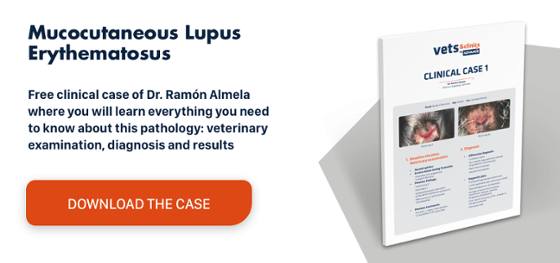Mange in cats: an assessment of therapeutic efficacy
Mange in cats: introduction
Mange is a disease exclusive to the skin that occurs in many species, including cats, and is of worldwide distribution. Mange in cats is caused by mites, specifically a microscopic ectoparasite that has different species and subspecies which can also manifest in different clinical forms.
So the different types of mange in cats include:
- Notoedric mange, caused by Notoedres cati. This only occurs in cats. It is the least common type. This disease affects both adults and nursing cats and is highly contagious, spreading through direct contact and causing severe itching. It follows a typical distribution of lesions, originating at the tip of the ears and extending across the rests of the ear, face, eyelids and neck. Skin thickening and a covering of greyish scabs eventually produce an area of alopecia.
- Otodectic mange (also called mange of the ears), caused by the mite Otodectes cynotis. Although it mainly affects cats, it can sometimes also develop in dogs.
- Cheyletiellosis, caused by Cheyletiella spp., occurs mainly in cats and occasionally in dogs. It must be differentiated from dandruff.
- Notoedric mange, caused by Demodex cati. This type mainly affects dogs (Demodex canis) and occasionally in cats, as it is the least frequent form of feline mange. It is the only subtype that does not cause pruritus.Demodex gatoi is pruritic.
Mange in cats: treatment
The use of certain treatments may be toxic in cats. To evaluate the efficacy of a formulation by Merial called Broadline (fipronil 8.3% w/v, (S)-methoprene 10% w/v, eprinomectin 0.4% w/v and praziquantel 8.3% w/v), a clinical study was conducted in cats infested by Notoedres cati wherein the product was applied topically to the treatment group. The mite’s presence was assessed through baseline skin scrapings taken before starting treatment and then every 2 weeks for a total of 8 weeks, while the characteristics of the lesions were also recorded to check for clinical remission. The results revealed an efficacy of over 99% against Notoedres cati with a single topical administration and that all the treated cats recovered from the clinical signs of notoedric mange. In addition, the treatment of mange in the sample of cats did not produce any side effects.
Since mange in cats is a skin disease, the differential diagnosis should be made against other skin diseases (particularly those that cause pruritus), such as atopic dermatitis, demodicosis, bacterial folliculitis, Malassezia dermatitis and food allergies.

